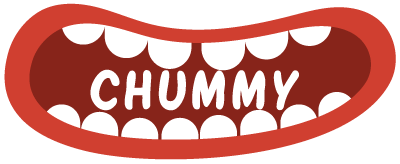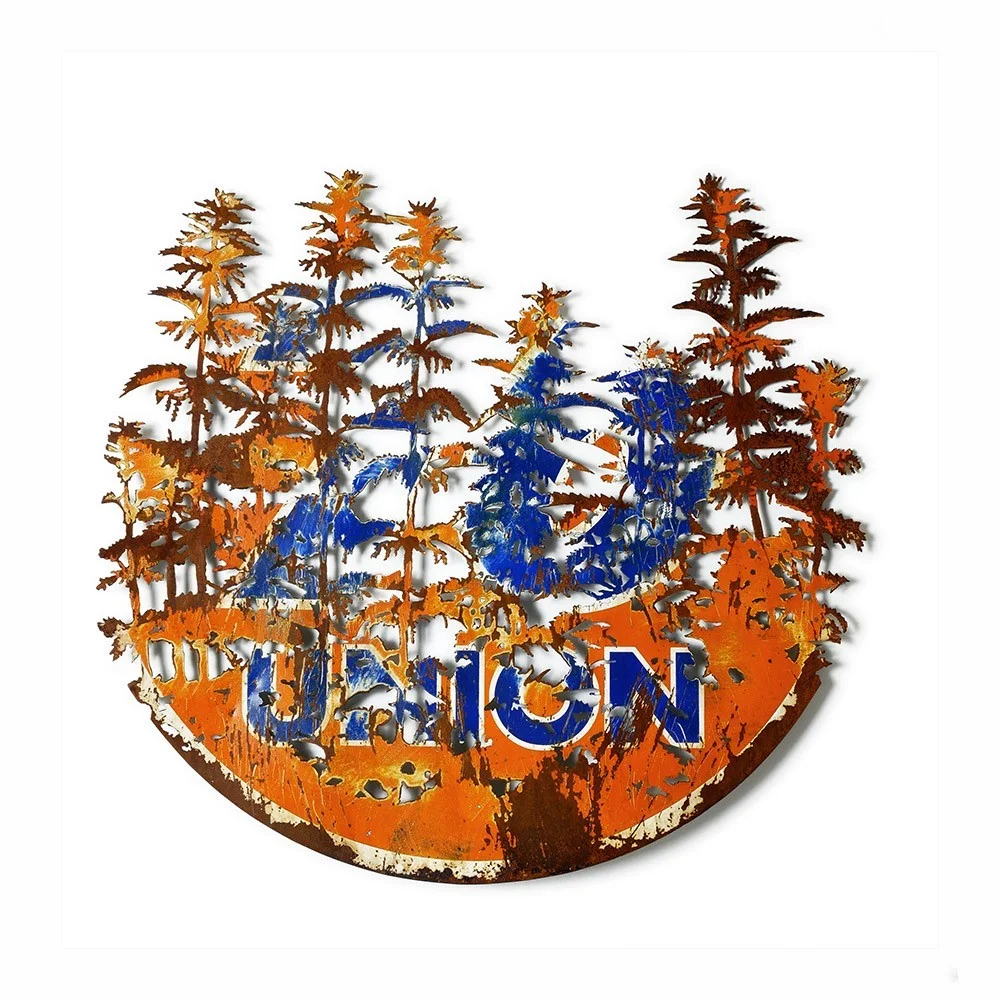Corey Helford Gallery Presents "Where Do We Go From Here?" Group Show (5/18-6/22)
Where Do We Go From Here?
Group Show
Dan Rawlings, ICY and SOT, Jackie Dunn Smith, Joe lurato, Jordan Seiler, SHOK-1, and Stormie Mill
OPENING RECEPTION
May 18, 2019 | 7pm - 11pm
ON VIEW
May 18 – June 22, 2019
“Union 76” by Dan Rawlings
On Saturday, May 18, downtown Los Angeles’ Corey Helford Gallery will proudly unveil their next group show, entitled Where Do We Go From Here?, showcasing artists from the street and urban genre whose work explores and examines today’s world and self, as it relates to identity, politics, and the human condition.
On display in Gallery 3 will be new works by British metal artist Dan Rawlings, Brooklyn-based Iranian brothers, ICY and SOT, female tattoo artist Jackie Dunn Smith, multidisciplinary artist Joe Iurato, New York-based public space artist Jordan Seiler, British artist and pioneer of aerosol X-ray art, SHOK-1, and Australian-based artist Stormie Mills. Info on each artist below.
About Dan Rawlings:
Contemporary British metal artist Dan Rawlings (born in Watford in 1979 and currently based in Gloucestershire, UK) uses plasma cutting as his medium, on such industrial relics as old vehicles, vintage hand saws, signage, and farm silos. His work mirrors the connection between industrial and nature.
Having a sympathy for unloved and forgotten relics, plus a fascination with nature’s resilience, have inspired Rawlings to create visions of a world where man’s impact is being slowly reclaimed by nature. He considers no technique or substrate out of bounds in achieving his intended results but is probably best known for his manipulation of metal and light, conceived with intricate hand-plasma cutting. Notable projects include the sculpture “Nature Delivers” based on the wreckage of a ford transit van and the huge ‘mighty oak,’ based on a 16 ft. farm yard silo constructed for the Affordable Art Fair’s 15th birthday in London's Battersea park. His signature works cut can be found in collections around the world.
About ICY and SOT:
ICY (born 1985) and SOT (born 1991) are artists from Tabriz, Iran, currently residing in Brooklyn, the two brothers started doing stencils in 2006. The brothers have contributed to Iranian and international urban art culture through murals, interventions, video, and installations, depicting human rights, capitalism, ecological justice, social and political issues. Their work appears globally, on walls and galleries throughout Iran, U.S., Germany, China, and Norway. ICY and SOT transcend their histories of artistic and political censorship by using public art to envision a world freed from borders, war, and violence.
About Jackie Dunn Smith:
Jackie Dunn Smith is an artist and tattooer from San Diego CA. Inspired in equal parts by classic portraiture, nostalgia, existentialism, and the simplicity of American Traditional tattooing, her seemingly surreal paintings are a bittersweet homage to the pathos of everyday life.
About Joe Iurato:
Joe Iurato is a multidisciplinary artist whose works are built on a foundation of stencils and aerosol. Falling somewhere in between simplistic and photorealistic, his multi-layer stencils offer a distinctly clean and illustrative aesthetic. While lurato’s murals have adorned neighborhoods along the east coast United States for years, he’s more recently become noted for the unique placement and photography of miniature painted wood cutouts in public spaces. Utilizing the outdoor environment to create site-specific installations, he creates windows into a narrative formed by personal experiences. Each individual work of art highlights the potential for interaction and storytelling within public space and transforms common land/cityscapes into carefully crafted scenes. Before leaving each installation behind, he documents it with a photograph which offer specific and intentional viewpoints of the artwork in relation to its surroundings, manipulating the viewers perception of scale and dimensionality.
About Jordan Seiler:
After graduating from Rhode Island School of Design in 2002 with a BFA in photography, Jordan Seiler returned to NYC where he was born in 1979. Since 2001, Seiler’s work has challenged advertising’s privileged role in public space while interrogating ways to create a more participatory civic media environment that reflects the democracy of voices in our cities. This has involved organizing large participatory public projects, creating gallery exhibitions from the materials of outdoor advertising, extensive activist writing on the role consumption plays in altering the space-time of cities, and working with augmented reality to develop new curatorial platforms for our shared public spaces.
In addition to exhibiting artwork in the U.S. and internationally, Seiler has run the activist organization Public Ad Campaign since 2002 and helped found the new media and augmented reality company Heavy Projects. His most recent new media artwork for BOMB magazine was a part of the group exhibition Standing Still Lying Down As If at Detroit MoCA and in 2019 his role as co-curator will be featured in a full-length documentary on the clandestine Underbelly project which is also documented in the Rizzoli publication “We Own The Night.”
Regarding the work he’ll be showing at CHG, Seiler shares: “Within the gallery my work explores the systems and materials used by commercial media to organize and shape our shared public spaces. Often overlooked, this infrastructure exists to privatize the shared resource that is our public visual environment and capitalize on the attention latent in all of us. Not the utopian vision of democracy I would like to see in our shared public spaces, I remove the physical branding, lights, plexiglass and the ads themselves in defiance of the private property rights granted to outdoor media companies and then reconfigure them to create work that reveals the ways in which our public spaces are being used to influence our collective imagination.
In addition to influencing our thoughts, this vast infrastructure dims our collective voice as it institutionalizes and homogenizes the place for, and content of, public dialogue. I find this an irresponsible use of our public space and believe that understanding our curatorial responsibilities in cities is a vital form of citizen participation that can help shape our streets in an image we all share. Given the voracity of our vision and the increasing onslaught of imagery endured in public, my practice is motivated by a belief that the curatorial choices we make in our shared public spaces are vital to the future health of our cities.”
About SHOK-1:
British artist SHOK-1 spray paints unique X-ray art on walls around the world. The works present a kind of diagnosis of life in the 21st century, sometimes in glowing health and other times pathological.
A cool blend of street and science, the artworks have tremendous resonance with a wide range of demographics: from fans of pop culture, contemporary and street arts, to surgeons, radiologists and scientists. Darkly beautiful and packed with subtle layers of intricate detail, X-rays are one of the most difficult subject matters a painter could attempt. SHOK-1 has pioneered cutting-edge freehand techniques using no tape or stencils to render his X-ray style.
The artist aims to champion rationalism in an era where anti-intellectualism is on the rise, scientists are silenced, and experts denounced in favor of the layman’s opinion. He was one of the first Europeans to co-opt the street cultures that exploded from the U.S. in the early 80's, laying down the foundations for what has become one of the most important art movements worldwide. He has continued to reinvent his work and take risks throughout a career currently spanning over 30 years.
About Stormie Mills:
Australian artist Stormie Mills uses generally colors and isolated figures to convey the process of self-discovery and isolation in his work. Mills first gave voice to the lost souls of the cityscape back in 1984. In the three decades since, he has created an evocative collection of characters inspired by and deeply connected to the street. His creative journey began in the forgotten corners of our cities, the abandoned buildings and broken back lanes provided a canvas. As his practice developed, Mills’ iconic characters found their way into the galleries and homes of collectors around Australia and the world.
His palette is sharply monochromatic. Black represents dirt, white speaks of erasure, grey is drawn from the cityscape and silver the language of dreams. The works draw on a deep sense of isolation and yet each character seems to carry a message of hope. These opposing elements in Mills’ practice imbue his characters with a palpable presence and humanity. And when art captures the tenderness of the human condition, people connect with it.
Where Do We Go From Here? opens Saturday, May 18 from 7pm-11pm in Gallery 3, alongside Part 2 of CHG’s 13th Anniversary group show, entitled Pop Surrealism & New Figurative, in the Main Gallery and a Three-artist show with Erika Sanada, Happy D, and Young Chun in Gallery 2. The reception is open to the public and all shows will be on view through Saturday, June 22. Corey Helford Gallery is located at 571 S. Anderson St. Los Angeles, CA 90033 and normal hours are Tuesday – Saturday, from 12pm - 6pm.
About Corey Helford Gallery:
Corey Helford Gallery (CHG) was first established in 2006 by Jan Corey Helford and her husband, television producer and creator, Bruce Helford (Anger Management, The Drew Carey Show, George Lopez, The Oblongs) and has since evolved into one of the premier galleries of New Contemporary art. Its goals as an institution are the support and growth of young and emerging, to well-known and internationally established artists, the production and promotion of their artwork, and the general production of their exhibits, events and projects.
CHG represents a diverse collection of international artists, primarily influenced by today’s pop culture and collectively encompassing style genres such as New Figurative Art, Pop Surrealism, Neo Pop, Graffiti and Street Art, and Post-Graffiti.
After nine years in Culver City, CHG relocated in December 2015 to a robust 12,000 square foot building in Downtown Los Angeles, where it continues to host exhibitions within the heart of the city’s art community. The current space boasts three separate galleries, each of which house individual artist and group exhibitions, whereas the main gallery offers 4,500 square feet, providing total immersion for its attendees. New exhibitions are presented approximately every five weeks. For more info and an upcoming exhibition schedule, visit CoreyHelfordGallery.com and connect on Facebook, Twitter, Instagram, and YouTube.
###






